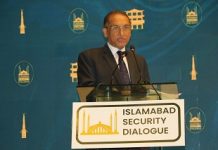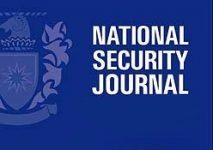Book Launch
Nuclear Deterrence in South Asia: New Technologies and Challenges to Sustainable Peace
on September 18, 2019
Distinguished guests, speakers, ladies and gentlemen, I welcome you all to this book launch.
The book addresses the issue of nuclear deterrence in South Asia, a subject of vital importance to Pakistan. The authors have argued that South Asia is embroiled in systemic security dilemma. It rests on the main pillars of neorealist argument – anarchy, fear and uncertainty. The core argument of the book is that the evolving technologies and competing strategies in South Asia make peace fragile and war more likely.
The authors contend that the strategic pattern of security dilemma is emanating from a broader systemic security dilemma between the US and China in Asia. It is argued that the US sees China as a threat and is building up a strategic partnership with India in order to counter balance China’s influence, while Pakistan is moving closer to China to counter balance India. These alignments increase uncertainty, and mistrust between India and Pakistan, moving the two nuclear armed states into yet more crises and military conflicts.
Dr Rizwana Abbasi and Dr Zafar Khan have rendered a commendable work, for which I wish to congratulate them.
Ladies and Gentlemen,
The book is timely because tensions in South Asia are high after India’s termination of the autonomous status of IOK. Moreover, Indian Defence Minister Rajnath Singh on August 16 has issued a threat over India’s No First Use (NFU) policy whereby he said that India has adhered to the NFU so far but what happens in the future depends on the circumstances. This seems like a signal threatening Pakistan with first use of nuclear weapons.
It appears that India is not only moving towards a doctrine of first use but there are indications that it is moving towards a doctrine of nuclear pre-emption as well. This is dangerous thinking on the part of India. It promises to have lasting effects on nuclear deterrence, force postures, introduction of new nuclear technologies, and change in nuclear doctrines. The present book helps us better understand the stresses on nuclear deterrence emanating from India’s irresponsible conduct as a nuclear weapon state.
Once we zoom out of Asia and South Asia, we see that the US and Russia are embroiled in a new arms race. Clearly the excessive US focus on non-proliferation has receded in the background under the Trump administration and on the contrary nuclear weapons have assumed renewed importance. Both the super powers are massively modernising their nuclear forces and going for new nuclear weapons. Landmark arms control treaty, the INF, has ended and New Start, which puts a limit on the number of strategic weapons that the two sides can employ, is at the risk of demise. This is bound to impact the prevailing international nuclear order and regional dynamics of nuclear deterrence.
I look forward to hearing from the authors themselves and from the expert commentators.
I Thank You












